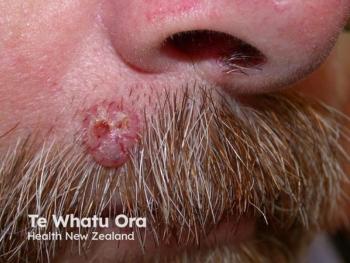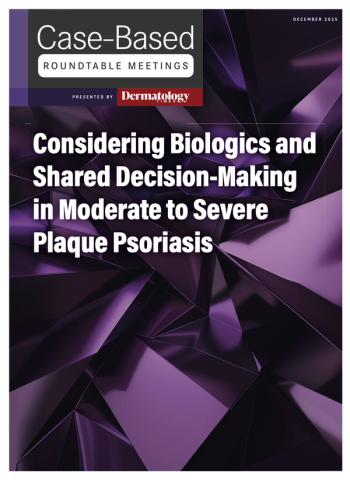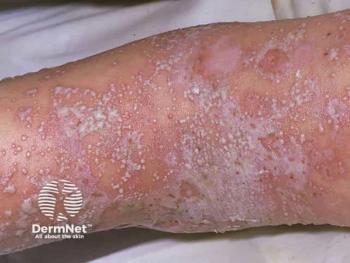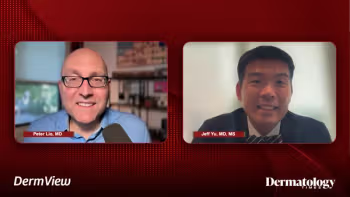
Electrotrichogenic Niostem Device Promotes Hair Growth in Men with Androgenetic Alopecia
Key Takeaways
- The device demonstrated 100% visible hair regrowth in men with androgenetic alopecia after six months of daily use.
- Low-level electrical stimulation via the device increased hair density and thickness, with no serious adverse events reported.
A novel electrotrichogenic device shows promising results in promoting dense, thickened hair growth for male androgenetic alopecia patients.
A new electrotrichogenicniostem device has been evaluated in men with androgenetic alopecia.1 In the trial, 100% of patients experienced visible hair growth after 6 months of daily, at-home use. Androgenetic alopecia affects half of all men around the world by the time they turn 50.2
The open-label, pilot study included 20 male participants between the ages of 21 and 40 years. Each had clinically diagnosed androgenetic alopecia, with a score between II to VI on the Norwood-Hamilton scale. All hair-loss therapies were halted 6 months before the trial began.
The wearable, noninvasive device delivers low-level electrical stimulation via conductive, brush electrodesto encourage hair growthand stop hair loss on the scalp. It is lightweight and convenient to include in daily routine, unlike previous electrotrichogenesissystems that are strictly limited to clinical use.
The device was used every day for 30 minutes over a 6-month period. Participants were also able to track their progress with an accompanying mobile app. Trichoscopicand photographic measurementswere used to compare hair counts, terminal density, andoverall thickness at baseline, 3 months, and 6 months. Patient-reported outcomes and adverse effects were also evaluated.
Approximately 95% of patients stopped their hair loss after just 3 months, while 86% observed hair regrowth. Absolute hairs increased from 211.6 to 235.8 when compared to baseline. At the 3-month mark, average hair density rose by 12%, including vellus hairs. No statistically significant changes in hair thickness were noted.
After 6 months, 100% of participants showed visible hair regrowth with total hair density increasing to 19.3%. Absolute hairs increased to 259.9. Thickness also increased by 8.8% at the 6-month follow-up (7504 ± 646.5 μm at baseline to 8591 ± 856.4 μm). The density of vellus hairs remained constant while terminal hair density significantly increased.
“We speculate that the device ultimately promotes HFSC activation, resulting in the entry of dormant hair follicles into the anagen phase,” the authors inferred. “The results also suggest that the effects of the device could be cumulative over time.”
Baseline patient satisfaction was a 4.9 on a 10-point scale. At 3 months, the average score increased to 5.6 and then again to 6.2 after 6 months. At the end of the study, about 75% of patients felt more confident and satisfied with their hair. Although overall treatment adherence was high, participant compliance did decrease slightly after 3 months but this did not affect the device’s reported efficacy.
No serious adverse events were observed, demonstrating the device’s excellent safety profile. Mild scalp pruritus and headaches were recorded in 9% and 4.5% of patients, respectively. These occurred in the first few days of use and are common with current approved anti-hair loss therapies.
The small sample size and the lack of a control group may be considered study limitations. It may also be difficult to generalize the data with the relatively narrow age range and the use of self-reported adherence levels. Nonetheless, these results align with previous reports on the safety and efficacy of electrotrichogenesis for male patients with androgenetic alopecia.3
Future literature can further explore the device’s mechanistic process through larger, randomized controlled trials with more diverse patient populations. The authors also hope to test the niostem technology on women with androgenetic alopecia or those who have experienced hair loss due to cancer chemotherapy.
References
1. Jellard S, Moore S, Chacón-Martínez CA. Novel Electrotrichogenic Device Promotes Hair Growth in Men With Androgenetic Alopecia: A Pilot Study. J Cosmet Dermatol. 2025;24(5):e70202. doi:10.1111/jocd.70202
2. Rhodes T, Girman CJ, Savin RC, et al. Prevalence of male pattern hair loss in 18-49 year old men. Dermatol Surg. 1998;24(12):1330-1332. doi:10.1111/j.1524-4725.1998.tb00009.x
3. Maddin WS, Amara I, Sollecito WA. Electrotrichogenesis: further evidence of efficacy and safety on extended use. Int J Dermatol. 1992;31(12):878-880. doi:10.1111/j.1365-4362.1992.tb03550.x
Newsletter
Like what you’re reading? Subscribe to Dermatology Times for weekly updates on therapies, innovations, and real-world practice tips.


















